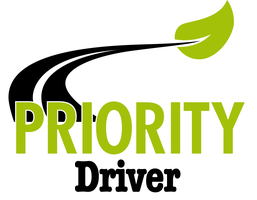
Knowledgeable, competent and efficient staff are key in any business and many invest considerable sums in their training.
Yet many ignore the value to a company of investing in driver safety training for those employees who are on the road, either visiting customers or transporting goods.
Obviously, businesses need to keep a tight control on their costs, but when you consider the costs of dealing with the consequences of a collision it is a false economy to ignore paying for driver training – for ALL employees, not only those employed as drivers.
Firstly, the Health and Safety Act 1974 requires you to ensure, so far as reasonably practicable, the health and safety of all employees while at work. You also have a responsibility to ensure that others are not put at risk by driving for work activities.
It doesn’t matter whether you are supplying their vehicles or they are driving their own, you, as an employer are liable if they should be involved in a collision when out on company business. Worse, if the collision involves a fatality you could can find yourself in court on charges of involuntary manslaughter.
We know of at least six police forces in the UK that routinely investigate the employer, not only the collision, to establish whether the driver training has been provided and any historic incidences have been addressed.
If a business does not have a safe driving policy and has failed to ensure drivers have been given driver safety training, you, as employer, will have no defence against prosecution, but there is more to consider.
There are considerable hidden costs to a business when an employee has been involved in a collision
You can work out accident costs for your business if you keep proper accident records with data including:
- Accidents per 100,000 miles/kms.
- Kilometres/miles per accident.
- Total accidents per mile driven (by vehicle type, e.g. artic, rigid, car).
- Shifts/months per accident.
- Accidents per vehicle or per driver.
- Average accident cost.
- Accidents per £100,000 of turnover.
Obviously, there is the cost of damage repair to vehicles involved and perhaps also the hire of a replacement vehicle while this is done. There may be an excess payment on the policy, which can be anywhere from £250 to £1000, depending on the policy, and it is also likely that the insurance premium will increase at renewal as a result.
But have you considered the “hidden” costs? These will include staff absence during recovery, the cost of recruiting temporary replacements or increasing overtime for existing staff and a loss of productivity if they are less proficient or familiar with the role for which they are covering.
Then there is the cost of the additional admin time in dealing with the insurance and other resulting paperwork not to mention a potential reduction in the quality of service you may be able to offer clients.
According to Fleetnews.co.uk “the International Loss Control Institute says that for every £1 an insurer pays out, the uninsured losses can be as much as between £8 and £53”, although it argues these could be a little on the high side and a more accurate assessment would be to double the claims cost. Even this is a significant amount. Multiply that by the frequency of claims and the additional revenue a business may have to generate can be significant, amounting to several £thousands of additional revenue.
If a particular employee or employees seems to be frequently involved in collisions you will need to look at both the nature of their job conditions and their own driving history.
For both legal protection and cost reduction it makes sense to pay for proper driver awareness and safety training.
Your detailed records, from which you can see the costs of collisions to your business, including all the hidden costs, should make this choice a no-brainer.

